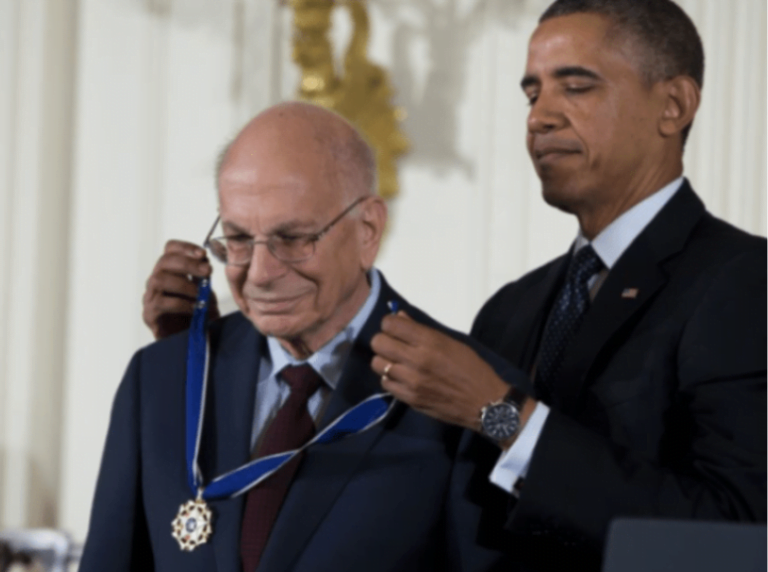Talking Big Ideas.
“He has eyes that pierce the body armor of a knight.”
~ Shakespeare describing Coriolanus
I was interviewing for a job at a research center.
Three senior staffers sat across the table from me. I wanted to be their Director of Media Relations. Things were going well when I got this question:
Do you think you can make our economists speak effectively on TV?
“Yes I can,” I said and explained that in my then-current job at a law firm, the attorneys were regularly featured on TV. He pushed back: “I’m talking about economists. Do you know the difference between an introverted economist and an extroverted economist?”
I admitted that I did not.
“An introverted economist will talk to you while staring at his shoes. An extroverted economist will talk to you while staring at your shoes.”
He was joking, but his point is important: Eye contact matters.
Bourke Cockran agreed. He mentored several of last century’s iconic speakers. Winston Churchill went so far as to say that Cockran had “the single greatest influence” on his life. Cockran’s first rule for effective speaking:
Never, never, never let words out of your mouth when your eyes are looking down.
Once I worked with a nonprofit leader who memorized his entire talk and then delivered it to the ceiling. I was amazed. Every word, straight up in the air. Technically, he obeyed Cockran’s rule – he wasn’t looking down!
Public speakers must make good eye contact.
Research shows you will come across as more intelligent and authentic when you excel at eye contact. People are more likely to pay attention to you and believe what you say.
Eye contact is so powerful that just a few minutes between two people can produce lifelong effects, transforming our opinion of foreigners and sparking romantic love. Incredibly, 10 minutes can trigger an experience similar to ingesting psychedelics like LSD and magic mushrooms.
For public speakers, it’s probably best not to stare at one person for 10 minutes. The evidence says to stick to around three seconds per person.
Goldilocks Zone = about 3 seconds
Don’t get hung up trying to robotically give each person in your audience three seconds. Rather, focus on being warm and natural. The way you do in normal conversation. According to Chris Anderson, the head of TED:
Our number one advice to speakers on the day of their talk is to make regular eye contact with members of the audience.
Think about a time you were in a group socializing and for some reason no one made eye contact with you. Have you ever experienced this? How did it make you feel? We evolved to be highly sensitive to eye contact so being deprived of it can be painful.
Here are some common problems I see when people are speaking in public:
- The Avoider: Ignores certain people or sections of an audience.
- The Bird at the Feeder: Quickly glances around the room without meaningful eye contact with anyone. This resembles a scared bird at a feeder looking around for danger and reeks of insecurity.
- The Dominant Side Bias: Right-handed people often focus on the right side of the room. Left-handed people, the left side.
- The Faker: Looks above their audience instead of making real eye contact. No one is fooled by this.
- The Fawner: Sees a high-status person in the audience and focuses all eye contact on them. Makes everyone else feel less important and disconnected.
- The Friend Crutch: Delivers their presentation directly to a friendly face in the crowd. Most of the audience is ignored.
- The Reader: Stares at their notes rather than connecting with their audience.
- The Slide Gazer: Delivers their presentation directly to their slides. Every moment a speaker looks at their slides is a moment they are not effectively engaging with their audience.
Think about when you’ve been on the receiving end of quality eye contact. Doesn’t it make you feel important, connected, and engaged? Notice the way Kelly McGonigal begins her viral talk on stress. See how quickly she draws her audience in with her eye contact:
Matt Paprocki is just as effective in his policy talk about winning converts:
Or consider any successful stand-up comedian. Chris Rock’s special Bring the Pain is a masterclass in eye contact:
Skip to any moment in these three videos. Notice how the speakers keep their audiences hooked with excellent eye contact. No one in the crowd has a chance to escape their grasp.
This is a skill anyone can learn. These seven techniques will help you become an eye contact expert:
1. Become Aware of Your Baseline: Watch yourself talk. Gather any existing footage of you speaking and capture new footage by setting up a camera, phone, or computer to record yourself. Once you start paying attention to your eye contact, you’ll naturally begin to improve. “What gets measured gets managed.”
2. Practice with Your Notes: For important speeches, you may like to practice with a script. Reformat it so there are no paragraphs. I encourage clients to have one idea per line, similar to a poem. And make the font large. Practice glancing quickly at your notes until you look and sound conversational while speaking. Remember Cockran’s rule not to speak while your eyes are down.
3. Practice without Your Notes: Regardless of how ill-prepared you feel, try practicing your remarks without looking at notes. Ideally, you internalize your remarks before big presentations: turn your notes into bullets and then drop the bullets altogether. The more clearly you understand your ideas, the more natural you’ll be when talking about them.
4. Pretend You’re a Lighthouse: This is a classic thought experiment. Think about how a lighthouse would move around and shine on every person in the room. Even the people all the way in the back.
5. Get Regular Feedback: Practice eye contact with friends and colleagues. Ask them for honest feedback. Ideally, create a weekly coffee or lunch to focus on skill development. You can also join a local Toastmasters group or work with a coach.
6. Notice Your Conversations: Pay attention to your eye contact during everyday conversations. Notice what feels natural and practice bringing that authenticity to your formal remarks.
Endless opportunities to build eye contact skills on the sidewalk. (Courtesy of ChatGPT4)
7. Take the Sidewalk Challenge: Go for a walk, jog, or bike ride. Look at the eyes of every person you pass. You can’t look away until you can silently tell yourself the color of their eyes.
If they happen to make eye contact with you while you’re looking at their eyes, it’s okay. Just smile!
Michael Ellsberg, the author of The Power of Eye Contact, says that the sidewalk challenge “is the best technique I know for building solid eye contact skills quickly. In my experience . . . no one minds at all, and you get tons of practice.”
The Sidewalk Challenge is the best way to quickly build solid eye contact skills.
Ellsberg adds, “If you practice [the sidewalk challenge] for a week or two as you go about your daily business,” your skills and comfort level will transform.
I encourage you to focus on improving your eye contact for one week. Let me know what happens!




